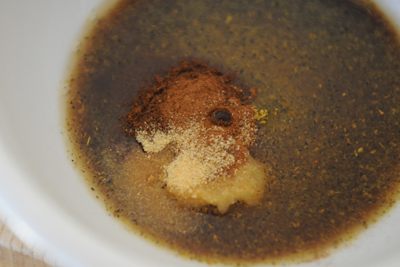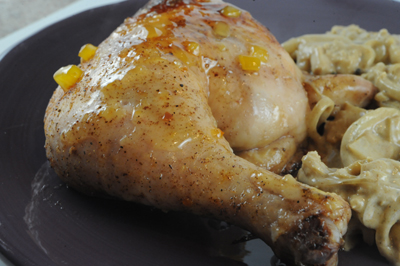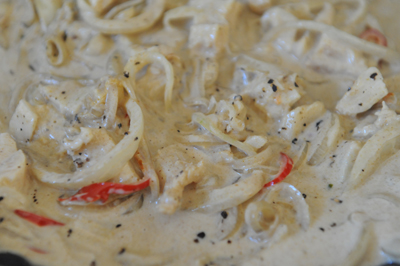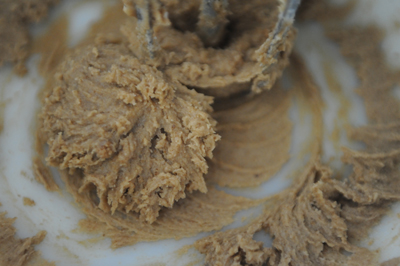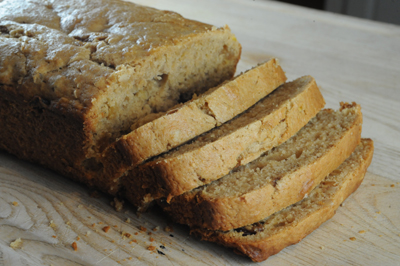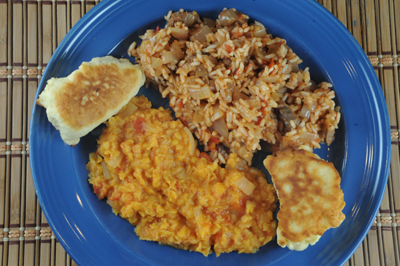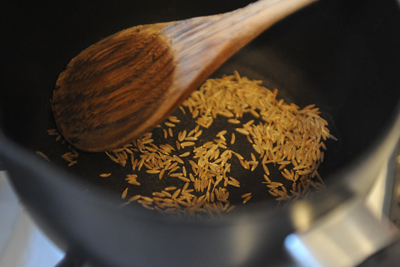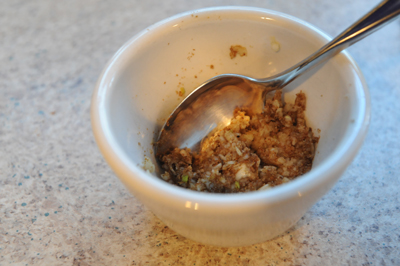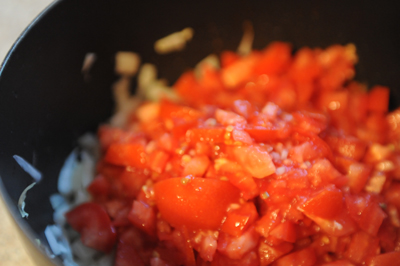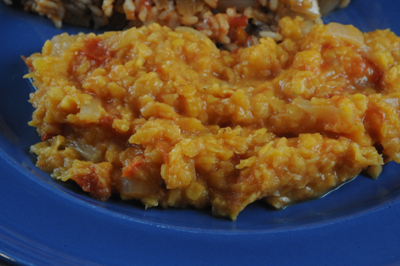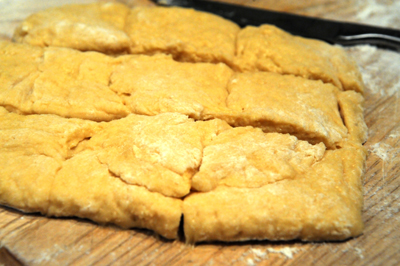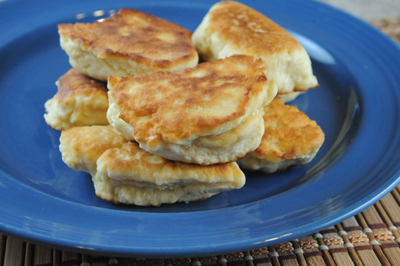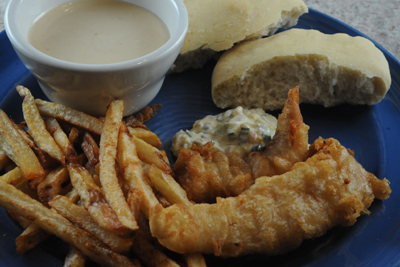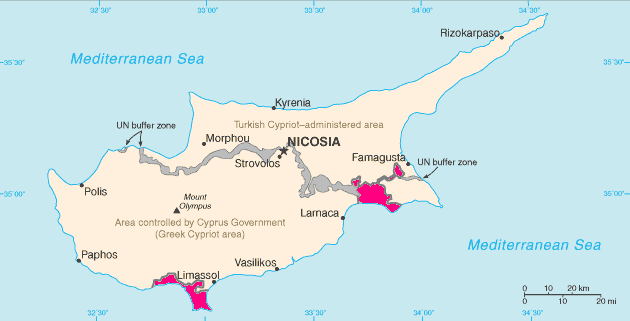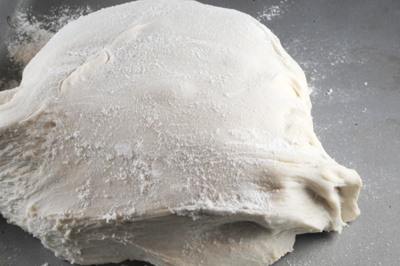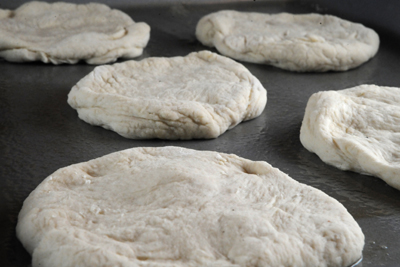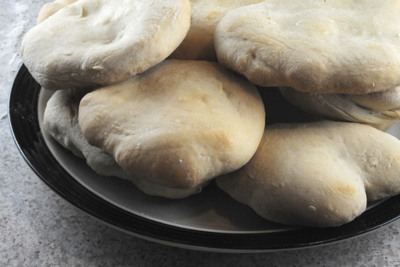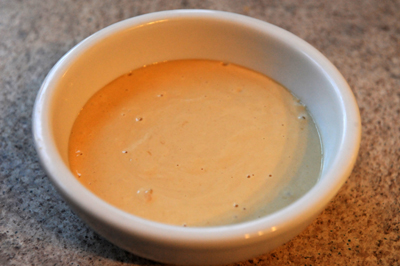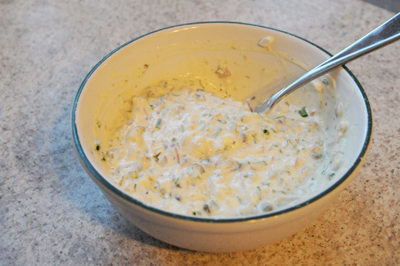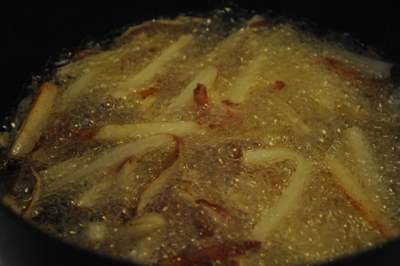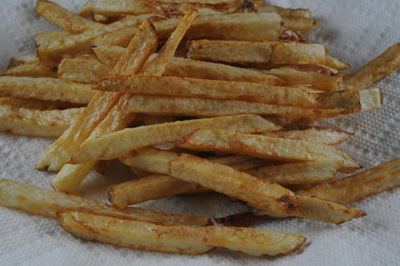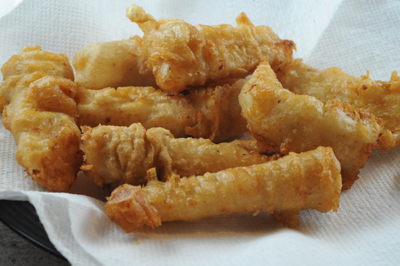One of these ingredients: pigeon peas. I love them. They have a wonderful earthy flavor and they are a great change from those basic legumes that we Americans are used to. So I was actually pretty happy to find pigeon peas in the recipes I was researching this week.
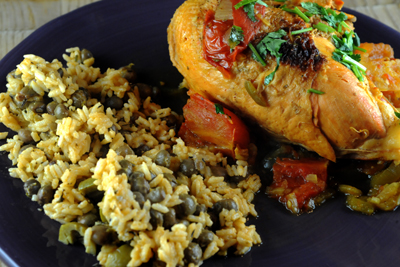 |
Here's where The Dominican Republic is located:

Now, somewhere off to the southeast are a bunch of little specs, which you can't see on this map because they're so tiny. Dominica is in there somewhere.
The Dominican Republic occupies the eastern two-thirds of the island of Hispaniola; the western one third is the nation of Haiti. The Dominican Republic is actually one of the locations "discovered" by Christopher Columbus in 1492 and was the site of the first permanent European settlement in the new world. Today it is the second largest economy in the Caribbean as well as the second most-visited Caribbean nation.
 |
| Catalonia Bavaro Beach, Casino & Golf Resort,
Punta Cana, Dominican Republic. Photo Credit: Martin Wippel via Compfight cc |
Dominican cuisine is a mixture of Taíno (the island's native population) and Spanish and African influences. Like the people who live in other Caribbean nations, Dominicans eat a lot of plantains, which I chose not to do (because although readers have told me I'm doing plantains wrong, I'm still not ready to give them another try), and staples like rice, beans and meat with a local twist.
I had plenty of recipes to choose from because cuisine from the Dominican Republic has a pretty big online presence. So here's the menu I ended up with:
Pollo Guisado
(from That's Dominican)
- 1 whole chicken, cut into small pieces
- 2 lemons, halved
- 2 green bell peppers
- 1 small red onion, sliced or cut into fine strips
- 1/2 tsp garlic, pressed
- 4 plum tomatoes, cut into quarters
- 1/4 cup pitted olives, halved
- 2 tbsp vegetable oil
- 1 tsp powdered chicken bouillon
- 3 tbsp sazon seasoning
- 1 tsp sugar
- water, to cover
- 1 tbsp tomato paste
- 1 tsp ground cumin
- 1 tsp chili powder
- kosher salt to taste
I have to add the disclaimer that I excluded a couple of ingredients from this recipe, based on them being excluded from another version I found elsewhere. And also based on the fact that I don't like those particular ingredients. I think I still have a pretty authentic Dominican recipe since there does seem to be a fair bit of variety when it comes to this particular recipe.
Here's the side dish:
This recipe came from Recipelink.com, which is one of those big recipe sites I don't usually like to depend on because the authenticity is hard to verify. In this case, however, I was able to cross check the ingredients with some other versions of this recipe and I'm pretty sure this one is genuine:
Moro de Guandules con Coco (Rice with Pigeon Peas and Coconut)
- 2 tbsp cooking oil, divided
- 1/2 tsp fresh parley, finely chopped
- 1/2 tsp fresh cilantro, finely chopped
- 1/4 tsp fresh thyme, mined
- 1/2 tsp salt
- 6 pitted olives, halved
- 2 cups rice
- 1 15-oz can pigeon peas
- 1 cups coconut milk
- 2 cups water
- 2 tsp tomato paste
- 1/2 tsp powdered chicken stock
- about 1/4 of a small green bell pepper, chopped fine
- 1 pinch oregano
- 1 clove garlic, pressed
- 2 tbsp capers
Arepa Dominica (Sweetened Cornmeal Cake)
(From Delicious Dominican Cuisine)
- 4 cups arepa corn flour
- 5 cups water
- 5 cups of milk (whole, reduced fat or skim)
- 2 12-oz cans evaporated milk
- 3 or 4 cinnamon sticks
- 1/2 cup raisins
- 1 1/2 cups light brown sugar
- 2 15-oz cans coconut cream
- 1 tbsp anise seeds
- 1 tbsp vanilla extract
- 1/2 tsp salt
- 4 tbsp butter or margarine
Mix the lemon juice with the peppers, onions, garlic, tomatoes and olives. Pour over the chicken and let sit for 30 minutes.
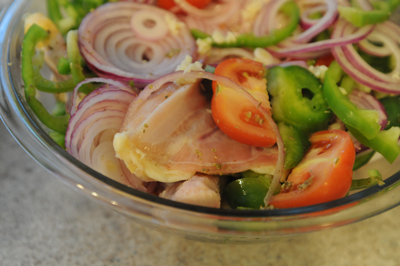 |
Now add the chicken to the pot and turn until coated with the seasoning. Cook on both sides until lightly browned.
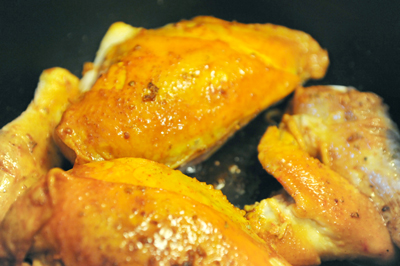 |
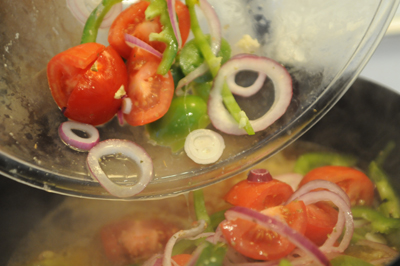 |
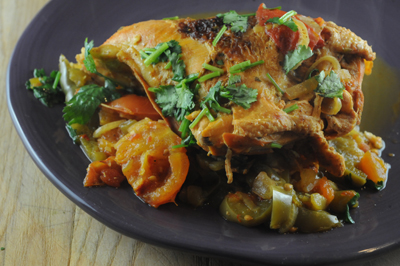 |
Heat 1 1/2 tbsp oil in a large pot and add the seasonings, herbs, peppers, salt and olives.
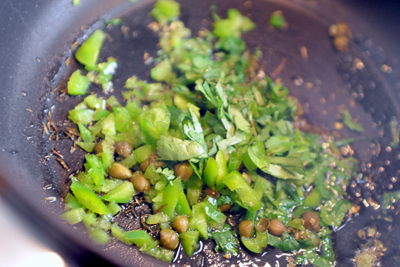 |
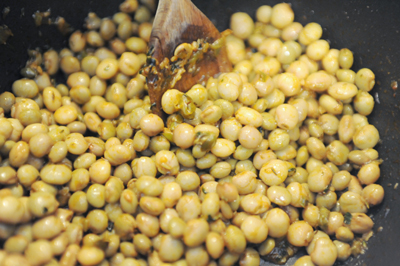 |
OK, now for the dessert.
What can I say about this dessert? It sounded good. I'm sure in capable hands, it is good. But this was as near to a disaster as anything I've ever made for Travel by Stove.
But I will repeat the recipe anyway, since I'm confident that its original author knew what she was doing. Here goes:
Add the arepa flour to a large bowl with the water. Stir to eliminate clumps. The flour will swell up, absorbing most of the water (this is what you want). Set aside.
 |
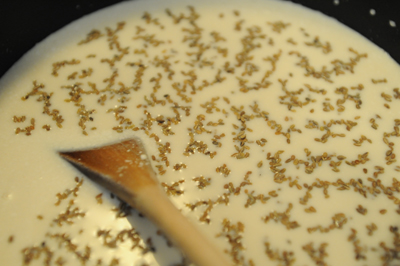 |
Now, when I was a teenager I remember reading this Stephen King short story about these people who had teleportation technology. In this particular world, when you teleport you have to be put under general anesthesia because if you are awake, the teleportation journey that physically happens in an instant will seem to your mind as if it takes an eternity.
Yes, that is what boiling milk is like.
Because milk scalds easily, so you can't walk away from it. And you can't boil it quickly, because it will curdle and then it will be all nasty. So you have to stand there and stir. And stir. And stir. And wish that someone had just given you the general anesthesia already.
So when you finally start to see those bubbles, like when your kids are ready to put you in that old folks home, you can add the damp arepa flour. Mix well, breaking up the clumps, and let cook on the stove. You'll have to stir it every minute or two to stop it sticking.
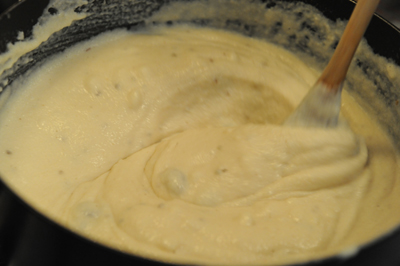 |
So eventually, your arepa will turn into a thick porridge like mixture. When this happens, you can put it in the baking dish. Dot the top with the remaining butter and transfer it to the oven.
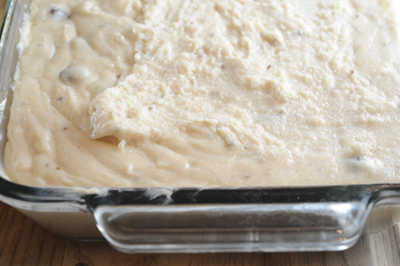 |
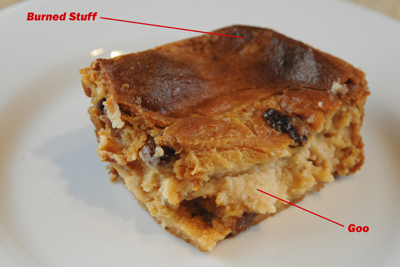 |
Funnily enough, the next morning the arepa had solidified to the point where it looked exactly like the photos from the original recipe. So I really don't know what was up with that. The instructions did say it was done baking when a toothpick came out clean (which never happened) but it also said to let it sit for an hour before slicing. Well, mine sat out over night and then was actually edible in the morning. Martin snacked on it for a couple of days—I tried a piece too but was underwhelmed. I don't know if it was my personal tastes or if it was because of how wrong the recipe went for me.
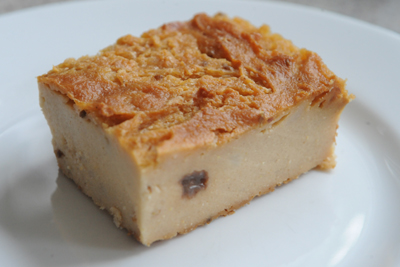 |
| This is actually what it's supposed to look like. |
Anyway, the chicken and the rice and pigeon peas were both delicious. Martin and I both gave a thumbs up to those two dishes, and Dylan did too (Though the girls didn't want to have anything to do with the pigeon peas. Typical.). So after a delicious main meal it was a little disappointing to not have a nice dessert to finish it off, but oh well. They can't all be winners.
Next week: Eastern Canada
For printable versions of this week's recipes:















